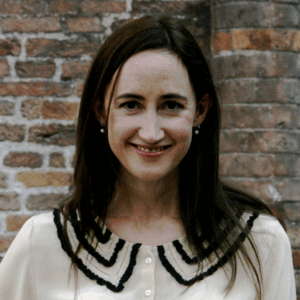
On Mismatched Emotions in a South Dakota Pandemic Classroom
Christy Tidwell on Staying Safe While Teaching
This piece is part of a series from teachers on the ways their classrooms have changed over the last year. Read others here.
*
As a college professor in western South Dakota, I enter the classroom every day full of fear, prepared to protect myself from my students and the sickness they might carry. I began the semester by asking them to wear masks in class, if not to protect themselves, then to help me protect my children (both too young to be vaccinated). I even shared a picture of my adorable five-year-old to give the issue a face. Students largely gave me blank looks during my heartfelt appeal.
Since then, the students who wore masks on the first day have continued to do so while others have remained maskless. In addition to being impervious to my appeals to wear masks during class, most make no effort to distance and many attend public events multiple times a week.
I like my students, and I am concerned for them. I have moments, though, when I wonder whether they even see me as a human being. If they did, I can’t help but think, they would wear a mask to class. Given how much of my teaching usually relies on trust (my trust in them as well as their trust in me), the disconnect between us threatens to damage my teaching. How can I, as Jesse Stommel has written, “start by trusting students” when I feel so much fear and anxiety about their behaviors, when I can’t trust them to act safely? The classroom can be an intimate space, one where we open ourselves to new ideas and to change. I wonder: is this intimacy possible without trust?
This fall, I’m back in the classroom for the first time in 18 months. I’ve missed in-person teaching, but, in the context of the delta variant and the surge in cases where I live, I have begun this semester with strong negative emotions rather than eagerness.
I remain afraid. I remain angry—although not at my students.
With no mask mandate and no vaccine requirement on our campus, I am taking what precautions I can: I wear a well-fitted, multi-layered mask to teach in every day (and in every campus space outside of my office), I distance as much as possible in our crowded classrooms, I wash and sanitize my hands regularly, and I even bring my own air purifier to each classroom. I have made personal appeals to students to wear masks in my classes—not only to protect my unvaccinated kids but also to prevent us from having to move online. I have structured my classes in ways that allow and encourage students to stay out of the classroom if they’re feeling sick: class Discord servers allow students to listen in and participate via chat when they aren’t physically present, and the labor-based grading system doesn’t penalize students for absences.
These actions help me feel a bit safer, but they also take a lot of work. Every day is sweaty and exhausting, there is more prep and follow-up work for each class than would be necessary under typical face-to-face circumstances, and there’s more to manage during class, too (my microphone, Discord, in-class dynamics, safety). I have enough fear and determination to push me through these challenges at this point, but at what cost? Will I reach midsemester and be unable to continue? Am I putting myself at greater risk of sickness by wearing myself out with this extra labor? These worries—and many more—weigh on me, making teaching this semester both physically and emotionally demanding.
Yet while I do all of this, most students act as if everything is normal, and the disconnect between my feelings and theirs about being back on campus wears on me. I am anxious about getting sick or spreading sickness, I am angry at administrators for doing nothing to protect us, and I am confused by my students’ confidence.
I will fight through this, too, of course. I have named generosity as an explicit goal in my courses, and I contemplate this regularly. I remind myself that students’ experience of the world and of this pandemic is quite different from mine. I remind myself that, ultimately, I just want us all to be okay and to get through this.
But I remain afraid. I remain angry—although not at my students. I do not feel hopeful, but I hope nonetheless that their confidence bears out—that they stay safe, that I stay safe, that my kids stay safe.
Christy Tidwell
Christy Tidwell is Associate Professor of English and Humanities at the South Dakota School of Mines & Technology. She primarily researches and writes about speculative fiction, environmental humanities, and gender studies and is co-editor of Gender and Environment in Science Fiction (2018), Fear and Nature: Ecohorror Studies in the Anthropocene (2021), as well as a special issue of Science Fiction Film and Television on creature features and environment (2021).



















